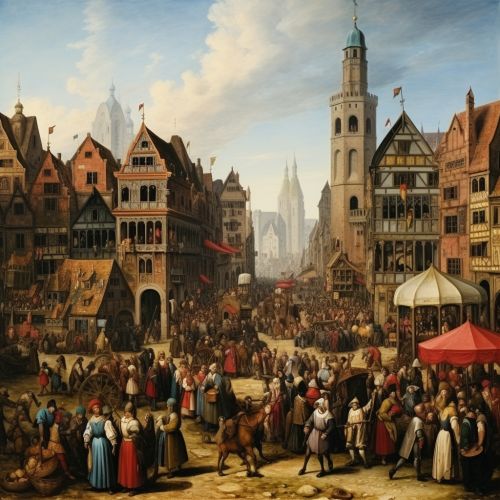Art Business Article
Overview
The Art Business is a complex and multifaceted industry that encompasses the creation, buying, selling, and trading of visual art works. This industry is driven by a network of artists, galleries, collectors, critics, and auction houses, all of whom play a crucial role in determining the value and demand for art. The art business is unique in its blending of aesthetic appreciation and financial investment.


History
The art business has a long and storied history, dating back to the Renaissance period when artists began to be seen as professionals rather than mere craftsmen. This shift in perception led to the establishment of the first art markets, where artists could sell their works directly to the public. Over time, the art business has evolved and expanded, with the advent of art galleries, auction houses, and online platforms further revolutionizing the industry.


The Role of Artists
Artists are at the heart of the art business, creating the works that fuel the industry. They often work independently, but may also be represented by galleries or agents who help to promote and sell their work. Artists can make a living through the sale of their works, but many also supplement their income through teaching, commissions, and grants.


Galleries and Dealers
Art galleries and dealers play a crucial role in the art business, acting as intermediaries between artists and buyers. They curate exhibitions, promote artists, and sell artworks, often taking a commission on each sale. Galleries and dealers also provide a platform for emerging artists to gain exposure and establish their reputation in the art world.


Auction Houses
Auction houses are another key player in the art business, providing a platform for the sale of high-value artworks. They operate by selling artworks to the highest bidder, often at prices that far exceed their original value. Auction houses such as Sotheby's and Christie's are renowned for their high-profile auctions, which can attract buyers from around the world.


Collectors and Investors
Collectors and investors are the buyers in the art business, purchasing artworks for their personal enjoyment or as a financial investment. The demand from collectors and investors can greatly influence the value of artworks, with high-profile purchases often leading to increased interest and prices for an artist's work.


Online Platforms
The advent of online platforms has greatly transformed the art business, making it easier for artists to reach a global audience and for buyers to discover new artists. Online platforms such as Artsy and Saatchi Art allow users to browse and purchase artworks from the comfort of their own homes, opening up the art market to a wider range of buyers.


The Future of Art Business
The future of the art business is likely to be shaped by technological advancements, changing consumer preferences, and shifts in the global economy. As the industry continues to evolve, it will be crucial for all players in the art business to adapt and innovate in order to thrive.


